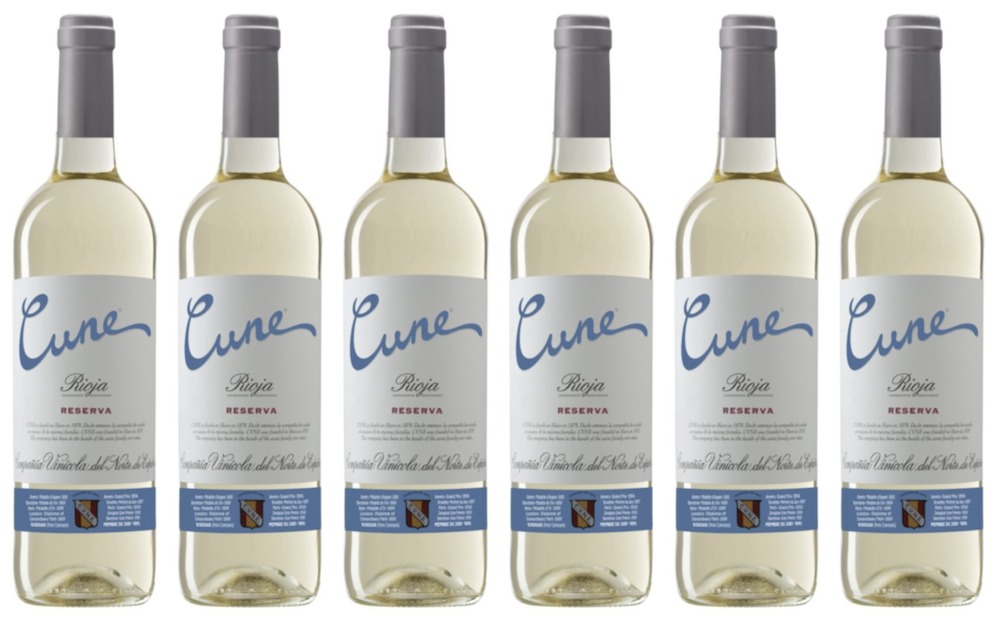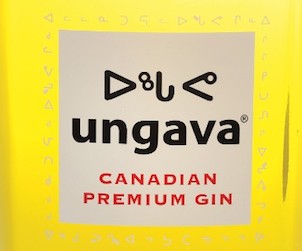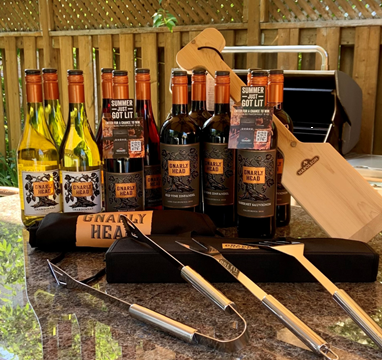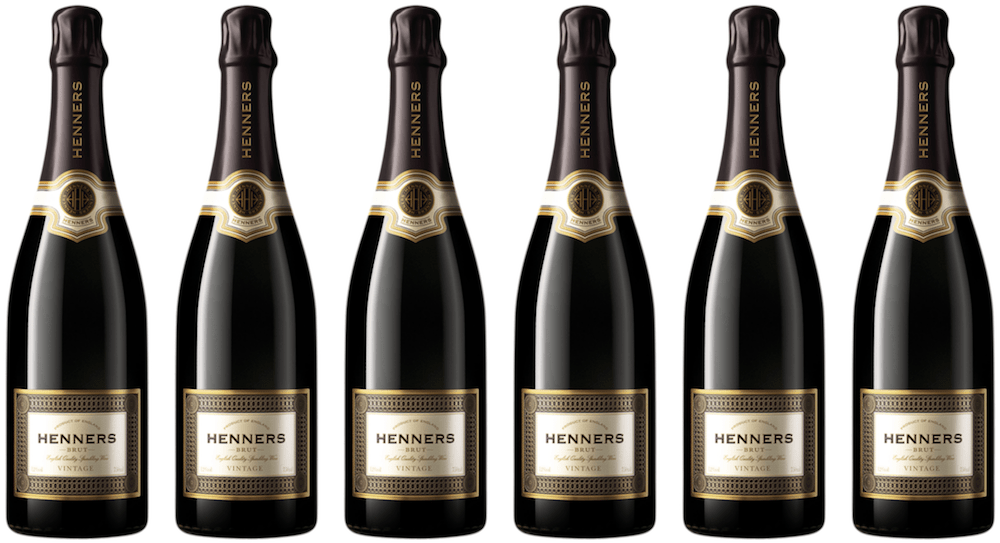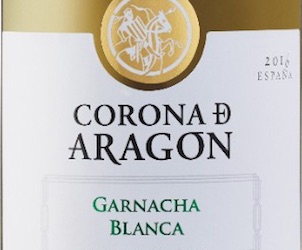
2018 Cune Rioja Blanco Reserva, Rioja, Spain (Alcohol 13%, Residual Sugar 2 g/l) LCBO Vintages December 11th 2021 – $22.95 (750ml bottle)
This is the inaugural vintage of the Cune Blanco Reserva, and I’m happy to inform you that it is absolutely killer. Modelled around the aged-in-barrel dry whites they made in the 50s and 60s (rarely exported and almost all consumed by the locals), this 100% Viura wine is sourced from from a mere nine hectares of bush vines planted in the Barbarroja vineyard, Torremontalvo way back in 1973, and the age of those vines really shows with some serious grace in the glass.
This is a wonderfully expressive example of what can be done with this variety given the right conditions in both the vineyard and winery, and I must doff my cap to the genius of vigneron Victor Urrutia of Cune for bringing back this wine style for a contemporary wine-drinking audience; it’s very “now”, whilst showing a side of Rioja that has, for the most part, been absent from the market for over half a century, and therein lies its almost timeless charm.
Given its interesting back story it’s almost a wine “out of time”, and yet it expresses such clarity and purity of fruit that it’s indubitably a wholly modern wine. Perhaps it is this very contradiction that draws me to it like a moth to the proverbial flame.
Left to hang on the vine a little later than most, the full clusters are pressed and then fermented in a combination of concrete, and oak vats, with just a touch of barrique, before being given 18 months in barrel to really knit together.
The resultant wine is crisp, pristine, and bone dry and yet displays a richness of fruit that is, for me, reminiscent of those rare older vine dry Semillons of Entre-Deux-Mers. It’s all gorgeously ripe white figs and Manuka honey.
Bloody excellent stuff.
![]()
(Four and a half apples out of a possible five)
Victor’s range of wines are represented in Ontario by Family Wine Merchants.
Family Wine Merchants are a Good Food Fighter.
Please support the businesses and organisations that support Good Food Revolution.
As well as conducting an extended video interview for GFR, earlier this year I interviewed Victor Urrutia of Cune for the now shuttered Somm360 online education site, and felt that republishing our text interview here may give some additional context to the above wine.
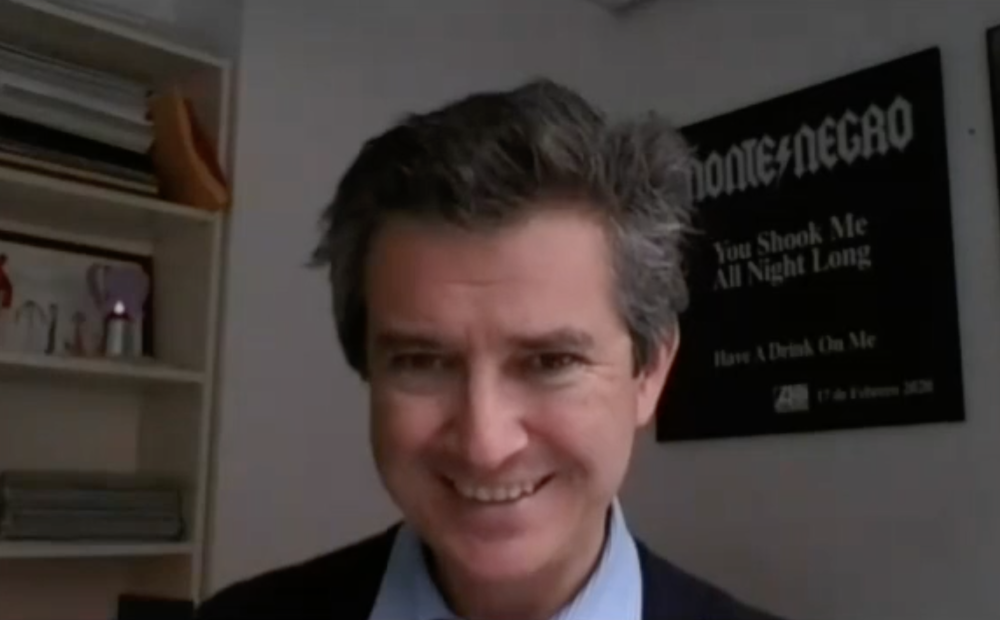
Vigneron Victor Urrutia Ybarra of Spain’s CVNE (Compañía Vinícola del Norte de España).
Somm360: Victor, please tell us a little bit about yourself and your family’s operation in Spain?
Victor Urrutia: Well, my family created CVNE (Compañía Vinícola del Norte de España) in 1879 and have owned and managed the company ever since. I’m part of the fifth generation to run it.
CVNE is an acronym. Our full name is La Compañia Vinicola del Norte de España, which means The Wine Company from the North of Spain. I think it’s a wonderful name. Impersonal, no ego; precise, to the point; and it references our country, which we’re very proud of. In fact, our symbol is just CVNE, inside the flag of Spain.
I think no-one else from Spain does that, which is crazy. I wish more people were proud of what we do in our country and told the world about it.
I’ve always said that in the past, all we cared about was just making the best possible wine. And that when me and my sister Maria started at CVNE, we added another priority to this very short list: to make our wines known across the world. I recently read an interview with some random winery owner who was saying the exact same thing. I don’t know if they borrowed the phrase from me … it does sound though as if it has become a marketing spin. Which is a pity.
The fact is, we’re the only winery in Spain, along with Lopez Heredia, that has stocks of historic vintages going back many many decades, produced uninterruptedly by our family. In our case, we have these wines because we didn’t care to sell them. The best of them are magnificent, and an example for us for future vintages. Our future really is in our past.
Somm360: You are seen as being very much a traditional Rioja producer; what does traditional mean to you when it comes to your particular region?
VU: I just mentioned that our future is in our past. If that doesn’t make us traditional I don’t know what does… but of course tradition can mean different things to different people.
To me, tradition is not do everything exactly the same as you did in the past. It is, let’s try to make the next vintage of Imperial Gran Reserva as close as possible to, and as good as Imperial Gran Reserva 1947.
I have no problem idolising the past because I know for a fact how good it was. I have tasted and drunk all vintages of Imperial and Viña Real since 1917 many times over my life and they keep getting better. Or maybe worse, I don’t know .. either way, we were doing things right in the past. If we can improve on that with technology that, for instance, helps us clean barrels and the wineries better, or take advantage of prunings from our vines to power our boilers, then let’s do it, but the reference point is our majestic past vintages. The fact that those wines live forever.
That’s what tradition means to me. Making wines now that will live, and improve, for one hundred years.
Somm360: Some may argue that traditions can hold a region back; why, exactly, have you chosen to stick with these traditions?
VU: To me, traditions only make sense if they allow you to make an excellent product.
Otherwise, you should dump them.
I can think of a number of consumer products that are low quality but have been around for a long time, bolstered by marketing dollars and savvy. What a shame. In our case, we don’t have marketing. We have quality products and we’re lucky that some people appreciate them.
A few vintages ago we re-released our Monopole Clasico that we had stopped production of 30 years ago; back by decree regardless of whether people like it or not (those that do, do – the rest, the majority, don’t particularly care, and that’s fine by me). It is as traditional as you can get.
Actually no… There’s something even more traditional, it’s the Monopole Clasico Gran Reserva 2014 that we are releasing this year, having spent five years in barrel and some time in bottle. It’s our fifth Gran Reserva, I don’t think anyone produces as many.
Somm360: Please tell us a little about your thoughts on maceration times for your styles of Rioja?
VU: Tempranillo is the predominant variety in Rioja. It’s actually a very versatile variety. Harvested to maturity in a warm terroir it can be vinified into a dark, brooding wine. There are examples out there of very powerful Tempranillos. Some I quite enjoy. However if you want the wine to age I think you have to go easy on the maturity and finish your alcoholic fermentation within three weeks max.
Our basic Cune Crianza gets about two weeks, maybe a few days more. Further maceration would make the wine too hard. Its style is deliberately soft. I like it very much that way. Imperial and Vina Real get a further week, as does Contino.
A lot depends on the harvest of course. The technical director ultimately decides exactly when the fruit comes in, and when the wine is made and will go into barrel and the skins pressed. For each individual vat. It is her call, not mine. She knows what the profile of each wine is, and correspondingly how she should make each one.
Somm360: Rioja and barrel ageing go very much hand in hand; what are your thoughts upon barrel ageing and the Reserva/Gran Reserva classifications?
VU: The Reserva / Gran Reserva classification by itself does not mean much from the point of view of quality. It is [simply] an ageing classification. It doesn’t say anything about the origin or the quality of the fruit, or about the quality or age of the barrel in which the wine rests.
It is however very handy and easy to understand. Reserva is better than Crianza and Gran Reserva is better than Reserva. The key really is the producer. A good producer will improve the quality of the wine that goes into each category.
The category therefore is useful to dip your toes. In CVNE’s case, it is important because we helped develop the category from the very beginning. The style of the wines really is different. Imperial Reserva for example is more forward than Imperial Gran Reserva. Better approached younger. Imperial Gran Reserva is more introverted when young. Both come from the same vineyards.
Somm360: And with that in mind, what kinds of barrels do you choose for your Riojas?
VU: Historically we had mostly American. Since the 1980s, more and more French barrels made their way into our cellars. We buy over 3,000 barrels across all our estates in total every year, all our reds spend a lot of time in barrel.
The average age of our barrels is 10 years. Obviously the majority are quite old, the impact of the ageing has more to do with the small capacity and permeation than with the oak influence as such.
Somm360: Let’s speak for a moment about the importance of controlled oxidation to the traditional style of Rioja?
VU: There’s a line between a wine that’s oxidised and an aged traditional Rioja. There’s a big difference in fact. A great rioja should not be oxidised, and should not oxidise for a very, very long time.
I hate oxidised red wine. White can be okay if it’s sherry-based or a sherry style, such as our Monopole Clasico (see above). The evolution that you see in a mature bottle of say Vina Real Gran Reserva is not oxidation. What you have is the product of lengthy barrel ageing and then even lengthier bottle ageing under cork. You could consider the former a form of oxidation in the sense that air gets in the wine more so than in say a stainless steel tank, and the latter too, with what permeates through the cork.
Perhaps that’s why some of our wines might appear at first to evolve faster than say something from Pauillac. But this is just for the first years out of the winery. After decades, if anything it’s the opposite. I’m very careful with the word oxidise, I only use it for wines that are past it.
As a side note, we never change corks precisely to preserve the magic that goes on with the wine in bottle. We’re adamant about this.
Somm360: What kind of fashions have you seen come and go in Rioja since you were involved in the business?
VU: Before the 1990s, the fashion rules were very simple. The vast majority of bottled Spanish wine was drunk in Spain. Unimportant wine was sold in bulk to France and Italy (this is still true today). Good wine came from Rioja. The rest, with very few exceptions that confirmed the rule, was just not good.
Rioja was made by a handful of producers, mostly from Haro. CVNE was fortunate to be one of those. Sherry was good but not for the dinner table, and [has been] in terminal decline.
Then came the 90s, our entry into Europe, and wealth. Different appellations sprouted out and became fashionable, Ribera del Duero, for instance. New producers in Rioja (as elsewhere) made powerful fruity wines in new French barrels. They were released young, after short bursts in new oak. Some got great Parker points. They became the zeitgeist. Many people were tired of the standard Rioja classification I mentioned before, finding it meaningless. In many cases, they were right.
Old fashioned Riojas like our Imperial became totally unfashionable.
20 years or so later the pendulum swung, and the big wines of the 90s made way to the classic Riojas such as ours. It turns out that we weren’t that bad. Wine drinkers tired of the concentration and tannin and came to appreciate just how drinkable and interesting Gran Reservas could be.
Nowadays, you could argue that another trend has set in, one that I also welcome; a return to the vineyard, a search for precision. I would argue that our Contino was a precursor of this in Rioja, being the first or one of the first single vineyards.
Somm360: How does one achieve that elusive balance between elegance/finesse vs. Power/colour? Or would that be a trade secret?
VU: It’s the key to what we do and it’s the result of centuries of work in the vineyards and cellars.
In Champagne they invented bubbles and became the best at it. We did something similar with our very own and particular fine wines. They’re not better than Bordeaux or Burgundy but in their own style, they can be as good. There’s no secret as such, there’s a hundred or as thousand little things that are done, in our case, every day and every harvest since the 19th century.
We are blessed with excellent terroirs, that was just luck. But some things are up to us. I can name a few things that we do differently that make a difference:
-Owning your vineyards. That way you control how your fruit is grown. You can also decide exactly which day to harvest. This is so important and hardly anyone talks about it.
-Not irrigating your vineyards.
-Keeping your yields low.
-Not wanting to release the wine as soon as possible to get your money Right Away.
-Using barrels to age wine, and ageing the better wine for two to three years in those barrels.
Somm360: I’d be curious as to how the zeitgeist of “natural wine” has impacted your region?
VU: There are some producers, mostly new and small, making what are generally considered natural wines – young wines with very low levels of SO2.
In general I disapprove of products that within the same wine and vintage, can be very different; one bottle tastes great and fresh and another smells of ass.
It never ceases to amaze me that someone in say Toronto goes to a shop and buys a bottle of Cune, our own wine, made thousands of miles away in a foreign language and country. I find it extraordinary. If that same person then opens the bottle and it stinks, I’m not there next to him to explain that he needs to let it breathe for an hour. Or, that it is murky and smells off because I didn’t add sulfites to the wine or treat it in any way, and that if he doesn’t like the look or smell of it, that’s their problem.
Having said this, right now, our Gran Reservas from vintages before 2005 – Viña Real, Imperial, even Contino – could be considered natural wines, given their very low level of SO2.
They start out their lives with say 100 mg / l of total sulphites, and this fades away over time in barrel and bottle. So in a sense we have been making natural wines since day one. We were doing something trendy without knowing it!
I really do think that these wines, our aged Gran Reservas, are very gentle on the body and the head. They’re easy to drink, long, with melted tannins, and you feel a lot better the next day than you might in comparison to young fruit monsters.
The lower alcohol plays a part too, of course. I recommend these wines, or adroit natural wines, to people that tell me that they like red wine but that they get big headaches the morning after drinking a few glasses. So you see I actually am a supporter of natural wine, in spite of my earlier comment.
Somm360: Thanks so much for your time, Victor. It is much appreciated.

